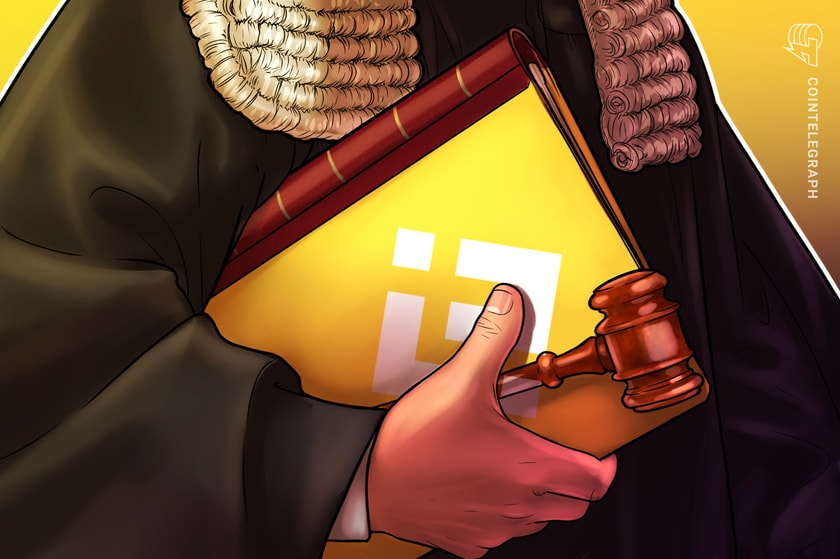Binance vs. SEC: Crypto industry debates ‘Tai Chi’ vs. ‘Operation Chokepoint 2.0’

The SEC lawsuit comes just months after the CFTC lawsuit against Binance, mounting its regulatory woes in the United States.
The United States Securities and Exchange Commission (SEC) has filed charges against Binance, its U.S.-based exchange entity and its CEO, Changpeng “CZ” Zhao, for violating securities laws.
On June 5, the SEC filed 13 charges against Binance in the U.S. District Court for the District of Columbia over allegations that the company misled investors and misused customer funds. The accusations of mishandling customers’ funds and violations of U.S. banking regulations were first flagged in a report published by Reuters in the last week of May. At the time, Binance had refuted all allegations, calling the report a list of conspiracy theories.
According to the regulator, Binance has been mixing “billions of dollars” in user assets and covertly moving them to a different firm under CZ’s control. The accusations included misleading investors by misrepresenting the effectiveness of the company’s mechanisms for identifying and preventing manipulative trading.
Regulators further alleged that Binance had not done enough to prevent American investors from using its unlicensed exchange. Some of the key allegations in the lawsuit include:
- Zhao and Binance secretly controlled the Binance.US platform’s operations behind the scenes.
- Zhao and Binance exercise control of the platforms’ customers’ assets, permitting them to commingle customer assets.
- BAM Trading (the entity controlling Binance.US) misled investors about non-existent trading controls over the Binance.US platform.
- Binance and BAM Trading were operating unregistered national securities exchanges, broker-dealers and clearing agencies.
- Binance and BAM Trading were involved in the sale of securities, including Binance’s own crypto assets; the exchange token, BNB (BNB); a stablecoin, Binance USD (BUSD); certain crypto-lending products; and a staking-as-a-service program.
The list of 13 charges against the crypto exchange by the SEC comes within months of another lawsuit filed by the U.S Commodity Futures Trading Commission (CFTC) in March, which invoked various reactions from the crypto community, with the most prominent being the divide over Binance’s approach — referred to as “Tai Chi” — and U.S. regulators alleged “Operation Chokepoint 2.0.”
The “Tai Chi” reference comes from a 2020 Forbes report alleging Binance had taken a series of steps to evade regulators in the U.S., citing a document labeling it the “Tai Chi entity.” Tai Chi is a Chinese term used to describe a method to avoid responsibility. At the time, Binance threatened to sue Forbes over the claims.
1/ If you are ever contacted by an individual named „Michael Del Ray“ @DelRayMan from @ForbesCrypto @Forbes , do yourself a favor and block this individual immediately.
I will show in this thread how this individual plagiarized me for a huge @binance expose ; @PENamerica pic.twitter.com/PmuczsAq43
— James Edwards (@librehash) February 12, 2021
Operation Chokepoint 2.0 is the term used by Coin Metrics co-founder Nic Carter to refer to an alleged effort by U.S. lawmakers and regulators to stifle the growth of the crypto industry.
Both theories resurfaced on June 5 after the SEC lawsuit, with Cardano founder Charles Hokinson fuelling the Operation Chokepoint 2.0 theory. Hoskinson claimed the SEC’s next in a series of steps is “to implement chokepoint 2.0 in the United States. The end goal is an agenda-based CBDC [central bank digital currency] partnered with a handful of massive banks and end-to-end control over every aspect of your financial life.“
With respect to Binance, I’m reading through the SEC complaint. It’s over 130 pages, but seems like the next in a series of steps to implement chokepoint 2.0 in the United States. The end goal is a agenda based CBDC partnered with a handful of massive banks and end-to-end control…
— Charles Hoskinson (@IOHK_Charles) June 5, 2023
Some members of Crypto Twitter who have been voicing their concerns about Binance’s regulatory troubles claimed that the Operation Chokepoint 2.0 theory is nothing more than a conspiracy, as the exchange was clearly selling securities.
Related: Binance plans new round of layoffs amid increased regulatory scrutiny
Tai Chi was referenced in the SEC lawsuit itself, leading some members of Crypto Twitter to recall the 2020 report.
12. Tai Chi!
Binance had a plan called „the Tai Chi Plan“ meant to „reveal, retard, and resolve built-up enforcement tensions“ in the US.
As it became clear its US business was violating laws, CZ wanted to help route VIP US investors offshore to create plausible deniability. pic.twitter.com/Q2vyfHxqWv
— Compound248 (@compound248) June 5, 2023
Many crypto community members believed the lawsuit against Binance was unusual, given the regulator rarely names executives. Thus, Binance might be looking at a massive settlement at best.
„I’ve never seen the SEC attempt to try a case in the court of public opinion. Usually they wait until after a case is settled to brag.“ – A former SEC official who wished to remain anonymous.
Do you think the @SECGov is sensationalizing the case before it goes to court? https://t.co/SpCM1IoBng
— Eleanor Terrett (@EleanorTerrett) June 5, 2023
Others were quick to remind the public that the charges are against Binance’s U.S. arm, which handles a small portion of the exchange’s global trading volumes.
Magazine: US and China try to crush Binance, SBF’s $40M bribe claim: Asia Express

